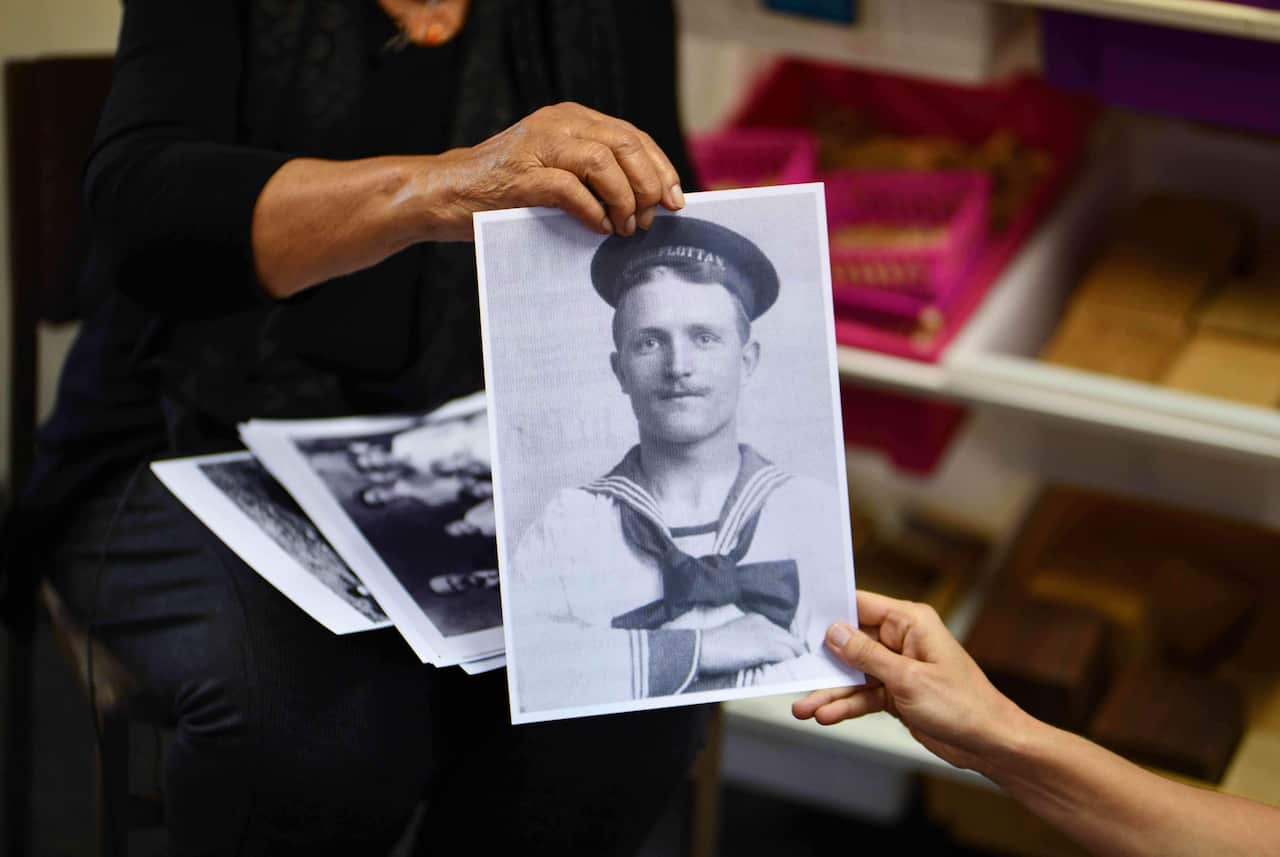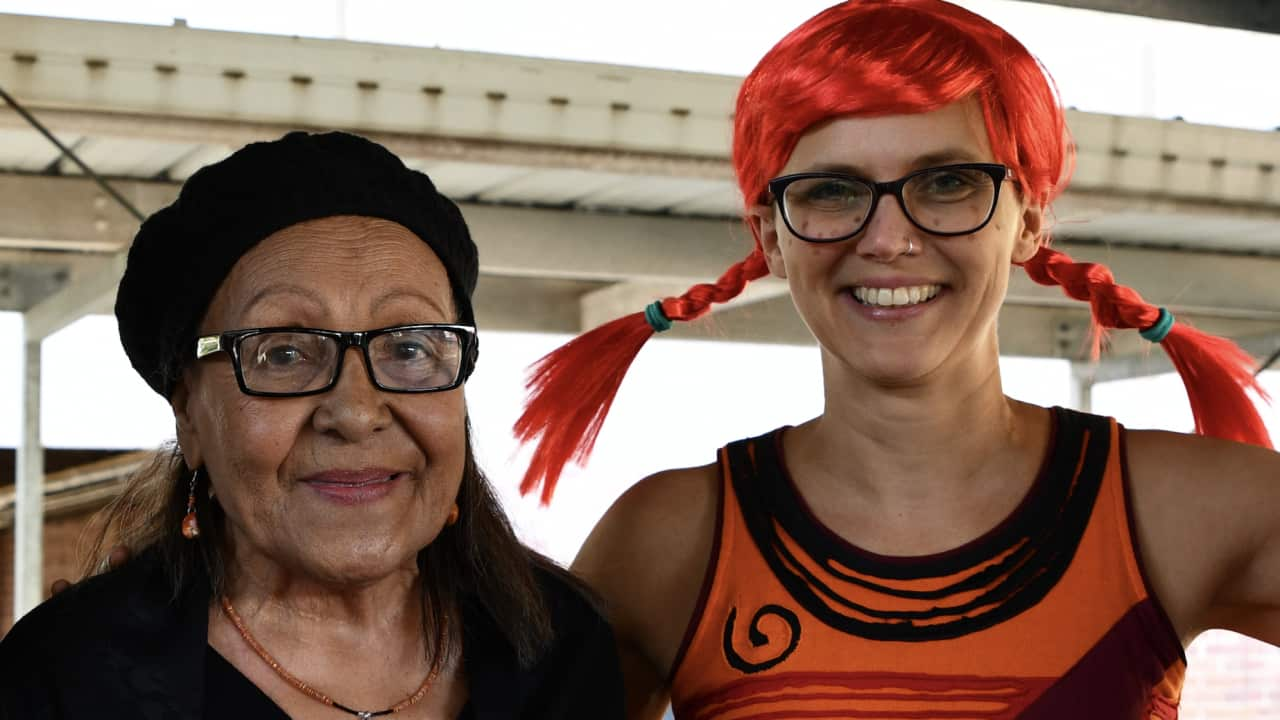Irreverent, self-assured and financially independent with a big bag of gold, Pippi Longstocking turns 75 next year.
But the fictional children's book character has a little-known connection to Papua New Guinea.
Pippi was created by Swedish author Astrid Lindgren as a role model for her daughter in the 1940s and the stories of the antiauthoritarian redhead and her pet monkey have been published in over 70 languages around the world, alongside cartoons and films.
But the story of a family thought to have inspired Lindgren is now being told by PNG-born Maria Chan Hoerler.

Source: Penguin Books
Ms Chan Hoerler's mother Elsa's story is remarkably similar to that of Pippi's.
“Mum was very adventurous, a very lively girl, she had a monkey that would do somersaults, and she would climb trees, a little tomboy,” Ms Chan Hoerler, who lives in Brisbane, told SBS News.
Just as Lindgren’s Pippi lives alone in Villekula cottage in Sweden without a mother, while her father Ephraim sails the high seas and rules as the king of a faraway island, Elsa was the daughter of Swedish seafarer Carl Emil Pettersson and PNG princess Singdo, born around 1907.

Photo of Carl Emil Pettersson and Singdu with their family including Elsa in the middle front row. Source: Supplied by Danyal Syed
Elsa’s mother died when she was about 10, and so as the eldest, she was sent alone to the German Catholic mission of Vunapope in Rabaul, PNG, where years later Ms Chan Hoerler was born.
“She said she didn’t like school, she preferred to be back in the islands, a real village girl,” Ms Chan Hoerler said.
About 20 years ago, Swedish researchers Joakim Langer and Helena Regius, working in PNG, made the connection detailed in their 2002 book 'Pippi and the King, on the Trail of Ephraim Longstocking', which has never been published in English.
“I grew up and had never heard of Pippi, it wasn’t a book we read,” Ms Chan Hoerler said.
Langer and Regius interviewed her about her grandfather, who is now recognised as the inspiration for Pippi's buccaneer father Ephraim and more.

Swedish sailor Carl Emil Pettersson Source: Isabella Porras
He was shipwrecked in 1904 on the island of Tabar, then a colony of German New Guinea, and was rescued by the chief and fell in love with his daughter Singdo.
To prove he was worthy of her hand in marriage, Pettersson set up coconut plantations and promised to bring wealth to the island. They finally married in about 1907, the same year Lindgren was born.
He regularly sailed back to Sweden alone to trade and tell tales of survival on a faraway island inhabited by “cannibals”, Ms Chan Hoerler said.
“He’d write in the Swedish papers and he always wanted to tell people of his adventures in the South Pacific. He’d write about the whole family and what they do.”

Maria Chan Hoerler and headteacher Caroline Kennedy dressed as Pippi. Source: Isabella Porras
The earliest stories are thought to have been published in 1914 and featured pirates, sharks and much adventure. He was dubbed 'King Carl the First' and 'Prince Pettersson', a celebrity much like Pippi’s father would become.
Swedish diplomat Count Brigen Moerner visited Tabar and took photos of Pettersson and his family, which were published back home.
"Grandpa would have brought all these clothes from Sweden, see Grandma is dressed up as a Swedish lady, and this is Mum,” Ms Chan Hoerler said pointing at a family portrait taken by Moerner.
Lindgren worked as a journalist and her first book about nine-year-old Pippi was published in 1945. The third book told of a big trip, 'Pippi in the South Seas'.
For Langer and Regius the parallels were striking.
Lindgren died the same year their book was published but it led to Ms Chan Hoerler and her children being reunited with distant family in Sweden.
Inspiring the next generation
Every Saturday, members of Brisbane’s small Swedish community gather at the heritage-listed Hamilton State School so their children can learn the language of their ancestors.
Ms Chan Hoerler was recently a guest of honour for their Pippi Longstocking day and told her family story to children dressed up as Pippi as well as Svenska Skolan headteacher Caroline Kennedy.

Pippi Longstocking day at Svenska Skolan in Brisbane. Source: Isabelle Porras
“I had no idea Pippi was based on true stories. As a kid in Sweden in the 1980s, that part wasn’t important, I really didn’t know,” Ms Kennedy said.
“I think Pippi is an amalgamation of Astrid Lindgren’s own character, her strength - because she was a single mum, working against the patriarchy - and a girl who played with a monkey. And that became Pippi Longstocking.
“Pippi is an inspiration to women and Astrid Lindgren started writing them as bedtime stories for her daughter to be strong, and it’s to inspire women to be strong, so it’s awesome.”
Ms Chan Hoerler wishes her mother was alive to see the impact the stories inspired by her family are still having today.
“My children say, ‘Mum, I can’t believe this is quite happening’, and I can’t believe it myself that finally, something is happening, that people are recognising it,” she said.
“I hope my mum is watching from heaven and enjoying it.”


